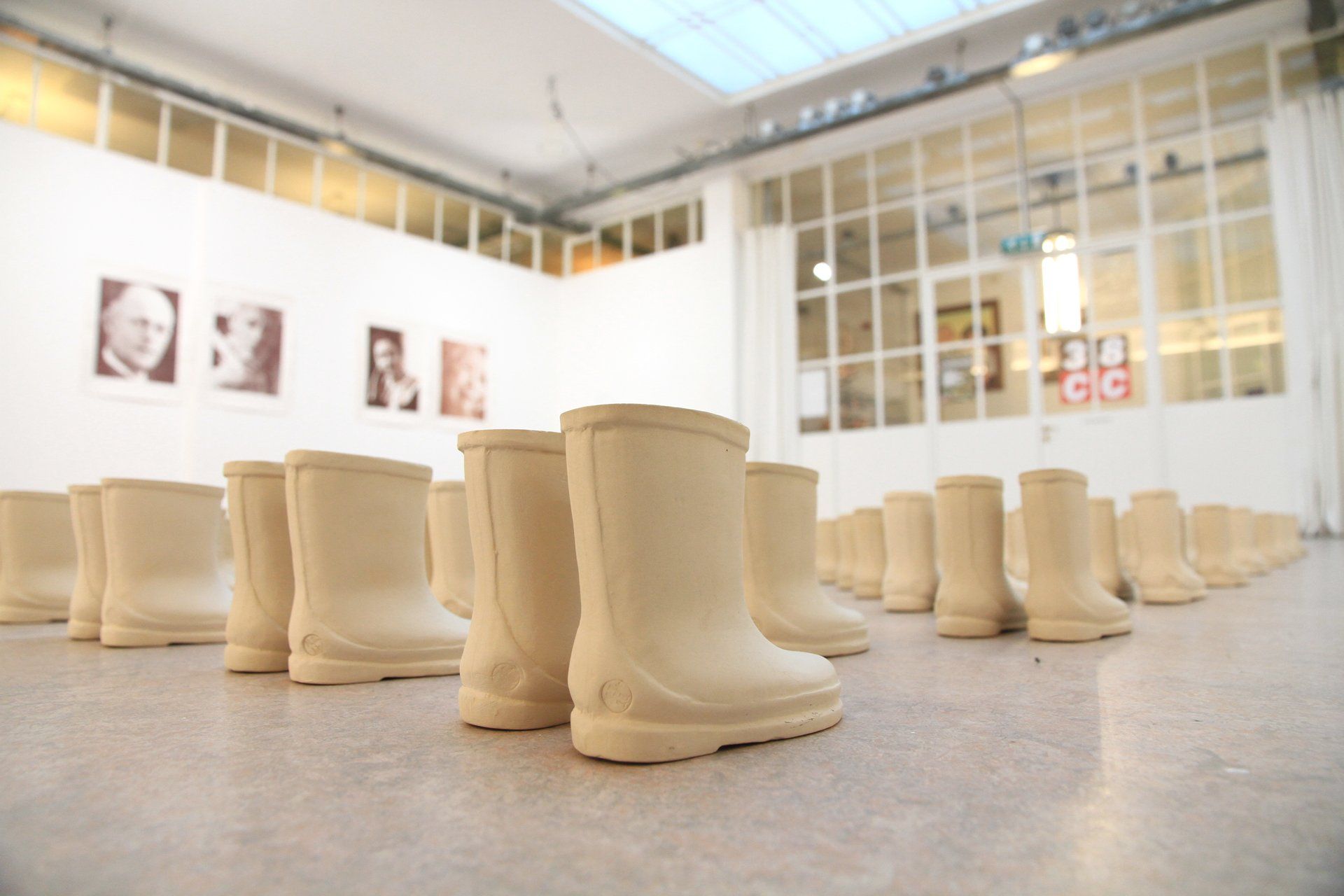Remembering a souvenir as an object (part 2)
November 24, 2012 through January 20, 2013
"How does remembering actually work? Do you need photos or a souvenir? And what are those memories about? About family, the holiday or something as defining as a historical event? That is what the exhibition Souvenir: remembering as an object is about (part 2). 38CC links the tourist souvenir with developments in contemporary art and the ubiquitous memory culture. With three exhibitions and a parallel program, the different associations and meanings of the concept of souvenir are revealed. , Margriet Luyten, Christina Linaris-Coridou, Jan Henderikse
"In the second Souvenir exhibition, the Spanish artist Fernando Sánchez Castillo depicts the effect of our collective memory. With a video and a photo series, he shows how Spain deals with memories of the former dictator Franco that have disappeared from the streets. the contributions of the other participants For example, with the installation Hope, a field of fragile children's boots, the Flemish artist Natasja Lefevre evokes memories of a lost youth In the double portraits of Mortals by Margriet Luyten, a whole life is drawn between young and old. The bright yellow hecomi by the Japanese artist Ken'ichiro Taniguchi are tangible memories of the disruption of our urban fabric. He created a new work especially for this exhibition, inspired by the local powder explosion of 1654. Jan Henderikse's two neon works with poetic texts about the Delft city center make a light-hearted contribution to the exhibition sition. Finally, Christina Linaris-Coridou makes a link with her work in the public space of Delft: a ribbon of pavers in Delft blue.


















